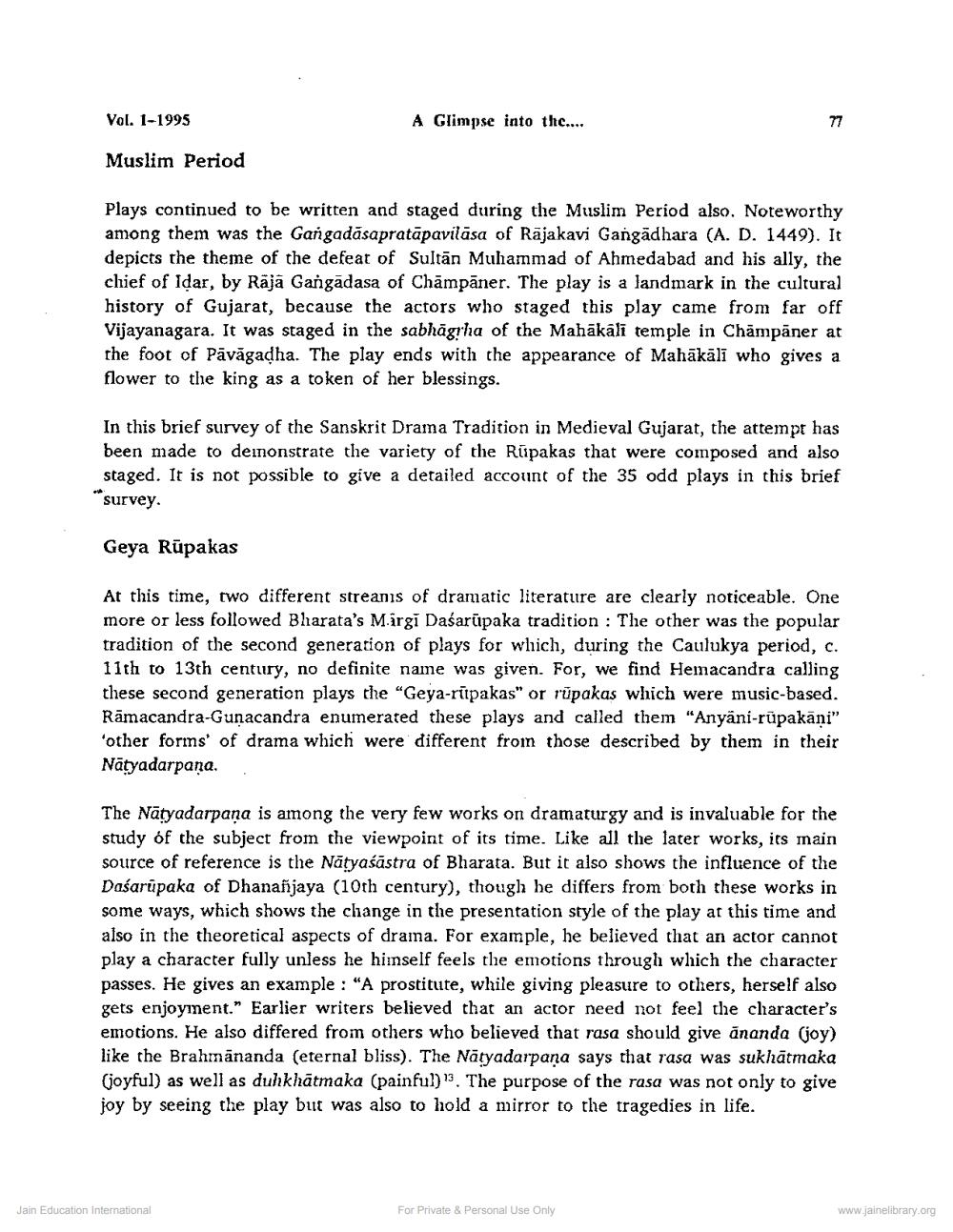________________
Vol. 1-1995
A Glimpse into the....
Muslim Period
Plays continued to be written and staged during the Muslim Period also. Noteworthy among them was the Gangadāsapratāpavilāsa of Rājakavi Gangadhara (A. D. 1449). It depicts the theme of the defeat of Sultān Muhammad of Ahmedabad and his ally, the chief of Idar, by Rāja Gangadasa of Champāner. The play is a landmark in the cultural history of Gujarat, because the actors who staged this play came from far off Vijayanagara. It was staged in the sabhāgrha of the Mahākāli temple in Chāmpāner at the foot of Pāvāgadha. The play ends with the appearance of Mahākäli who gives a flower to the king as a token of her blessings.
In this brief survey of the Sanskrit Drama Tradition in Medieval Gujarat, the attempt has been made to deinonstrate the variety of the Rūpakas that were composed and also staged. It is not possible to give a detailed account of the 35 odd plays in this brief
** survey.
Geya Rūpakas
At this time, two different streanis of dramatic literature are clearly noticeable. One more or less followed Bharata's Margi Dasarūpaka tradition : The other was the popular tradition of the second generation of plays for which, during the Caulukya period, c. 11th to 13th century, no definite name was given. For, we find Hemacandra calling these second generation plays the "Geya-rītpakas" or rūpakas which were music-based. Rāmacandra-Gunacandra enumerated these plays and called them "Anyani-rūpakāni" 'other forms of drama which were different from those described by them in their Nātyadarpana.
The Nātyadarpana is among the very few works on dramaturgy and is invaluable for the study of the subject from the viewpoint of its time. Like all the later works, its main source of reference is the Natyaśāstra of Bharata. But it also shows the influence of the Dasarūpaka of Dhananjaya (10th century), though he differs from both these works in some ways, which shows the change in the presentation style of the play at this time and also in the theoretical aspects of drama. For example, he believed that an actor cannot play a character fully unless he hinself feels the emotions through which the character passes. He gives an example : "A prostitute, while giving pleasure to others, herself also gets enjoyment." Earlier writers believed that an actor need not feel the character's emotions. He also differed from others who believed that rasa should give ānanda (joy) like the Brahmānanda (eternal bliss). The Natyadarpana says that rasa was sukhātmaka
joyful) as well as dulkhātmaka (painful) "3. The purpose of the rasa was not only to give joy by seeing the play but was also to hold a mirror to the tragedies in life.
Jain Education International
For Private & Personal Use Only
For Private & Personal Use Only
www.jainelibrary.org




